Introduction
I’m going to be honest with you for a minute here. This is the point in Montessori homeschool when most people give up. I’ve seen just about every iteration of moving to different homeschooling approaches, moving to Montessori schools, and moving to traditional schools. I have struggled myself with how to best implement this in-depth curriculum and have tried many different adaptations. Some trials have enhanced our learning and others have overtaken it and I’ve had to say goodbye to them. Some seasons haven’t lent themselves to a Montessori approach and we’ve had to step away, but we always feel a sense of relief when life allows us to return. Montessori elementary homeschool is not without its challenges, but it is also rich with rewards for those who choose to embark on the adventure.
The first thing I want to tell you is that you cannot successfully homeschool Montessori elementary without at least a set of albums. Others may disagree and I will even allow that you may not need the training that goes with the albums, but you need to be personally committed to studying and growing as an educator at the very minimum. While there is the slim possibility of successfully implementing primary Montessori “out of a box”, there is simply no way to do that with elementary. The value of a good mentor cannot be over stated. This post is best described as a taste of what you receive from a mentorship, a snapshot of what Montessori Elementary at home can look like rather than a step by step guide to get there.
My Favorite Elementary Montessori Blogs & Resources
What Did We Do All Day
Elementary Observations
Montessori School at Home
Montessori on TPT Facebook Group
Montessori Compass Scope & Sequence
Living Montessori Now: Resources Page (Scroll down for Elementary Specific Posts)
Training, Philosophy, & Albums
I have AMS elementary albums for lower and upper elementary from my husband’s training program and have chosen not to overwhelm myself by purchasing additional albums. These resources listed here are chosen from what I hear most other bloggers and parents discussing. Keys of the Universe is probably the most popular training and album program for Montessori homeschooling families. Cultivating Dharma is a popular free set of albums, although it is incomplete and I’m told in need of some updating. If you want additional recommendations on albums visit some of the blogs above and see what they are using.
I highly recommend whatever set of albums you use, having digital versions available on a tablet as they are easier to refer to if you get stuck while teaching. I believe this is important enough I would consider purchasing the cheapest version of a Kindle Fire just for that purpose if you don’t already own a tablet. You will spend more than the cost of the Fire on printing and organizing all of that paper.
Observation & Record Keeping
Observing is a key facet of Montessori education. If you are just getting started in Montessori at the elementary level, I encourage you to spend some time right now practicing this skill. You can have a paper pencil if you want, but just sit silently and observe your child. What do you learn about him or her? Learning to observe without interacting is a tough skill to master. You may need to put a book in your hands and pretend to be doing something else both for yourself and for your child!
In order to keep track where multiple children are in each subject across many grades, I use a one page table for each child (shown above). The table has a column for each area of the curriculum that they are studying and spaces for me to write upcoming presentations. I adjust the list in real time on a daily basis as I see that a child is getting ready for a new concept or needs to review something we have covered in the past. I also have a second notebook where I jot down longer term ideas and projects for each child. I am simultaneously observing to record where we need to be right now and to plan ahead by at least a semester.
Another observation and record keeping help is to teach your child to keep their own records of work using a work plan. There are many varieties available, but I encourage you to custom modify and design a work plan to your child. The work plan provides direction and accountability, while still leaving the child in charge of decision making and planning their day. This is an important life skill for the workforce some day! Over the course of the elementary years, some build to progressively more complicated and involved work plans, but I believe the opposite is possible. My older children have more lessons and required follow up work, but also have more flexibility in managing the completion of projects.
See Also: Homeschool Student Planner Pages
Making Decisions
The hardest part of using a Montessori approach at home, for me, has been making decisions about what to keep and what to supplement. This is where the importance of observation really comes in for me. There is so much material that it is unlikely that most families can own it all, particularly if they have a larger family or an age range that crosses multiple developmental planes. If I notice that with most operations, for example, that we don’t need to use the Golden Beads, Stamp Game, Bead Frame, and Dot Games to reach abstraction I will know that that is a place I can save time and money in the future. In the same way I can use the information from observations to know which materials are worth spending a little more on based on my child’s need/use of them and which a one-time low cost or free printable will do the trick.
This is another place doing your research up front comes in handy. Knowledge is power when it comes to choosing which materials to invest in and which subject areas to start when. Montessori elementary materials are either expensive or time consuming to make and taking the time to make informed decisions is a valuable cost and time saving measure.
Great Lessons
Montessori elementary classrooms around the world begin their school year with what are called the 5 Great Lessons. Montessori for Everyone has an extensive page explaining both the lessons, their purpose, and where they go next. In the homeschool setting, you get to organize your great lessons around your own timeline and beliefs! I typically present the great lessons every 3-4 years, coordinating with when we study ancient history in culture.
See Also: Montessori Clock of Eras, Formation of the Universe Coloring Sheets
See Also : Christina Rosetti Poetry Unit, Sample Noun Lesson, Life of Jesus Grammar Set, Life of Mary Grammar Set, Pink Blue Green Reading Bingo, Types of Nouns Word Sort, Types of Words Review Sort
Option A: Use a strict Montessori approach. This will require manuals and then materials purchase, but always purchase your album first. The Montessori scope and sequence is quite different than a traditional scope and sequence. If you are using Montessori for the first time, I recommend starting with the end of a Primary album or at the beginning of the Elementary album regardless of what age your child is. They will advance more quickly through areas they have already covered but will avoid holes. Make liberal use of YouTube for demonstrations of using materials you are unfamiliar with and always practice before giving lessons as some of the materials are a bit awkward at first.
Option B: Farm out Math by using a purchased curriculum. Math U See is roughly based on a Montessori approach and uses a concrete before abstract instructional method. The manipulatives are less costly in this approach than using a strict Montessori style. The thing to remember is that while all curriculums vary in their individual success with a particular child and the amount of hands on materials they use, they are all available for sale because they work. The one thing I would not do is switch curriculums a bunch of times.
Option C: Use a spine such as Math U See or even Khan Academy and supplement with Montessori presentations of new concepts as needed. This approach lets someone else (the curriculum) worry about where your child is and what they should learn next and cuts down on the number of materials required because your child will move to abstraction more quickly than a full Montessori approach. You can read more about how I have done this, here.
You don’t have to do the same thing for all of your students. I find that I use a stricter approach with my youngest students (primary and lower elementary), a blended approach with my middle students (upper elementary), and a purchased curriculum with my oldest (secondary). This progression allows for me to not go crazy, while still giving everyone the benefits of a Montessori approach where I feel it is most valuable and best in tune with the sensitive periods.
See Also: Montessori Geometry Charts-Triangle Series, Montessori Digital Decanomial, Montessori Tables AB&C
Montessori elementary at home can be very overwhelming. My best efforts to summarize things here could never change that truth. With support, however, it can be a very empowered educational decision for your family.
SaveSaveSaveSave
SaveSave


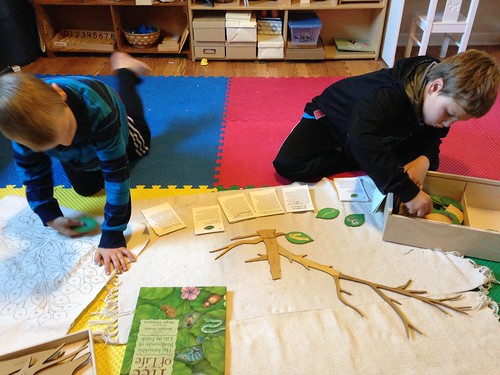

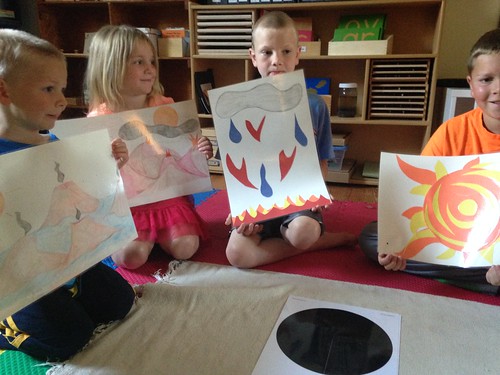
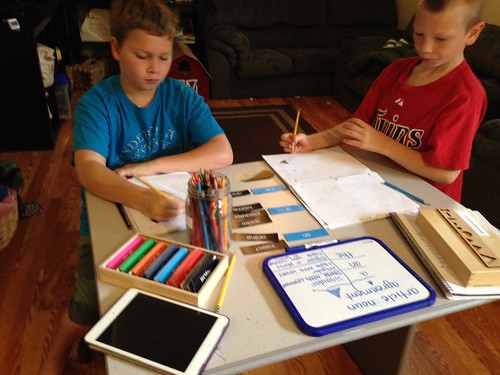
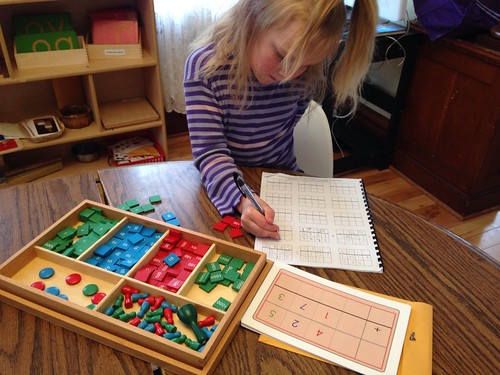
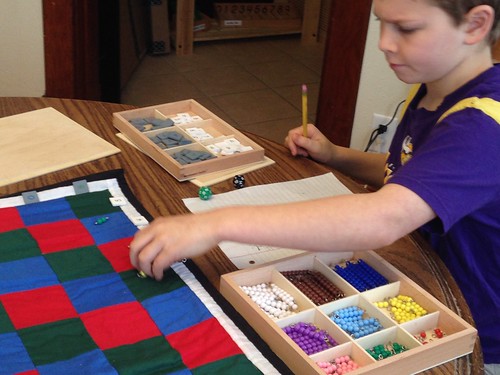

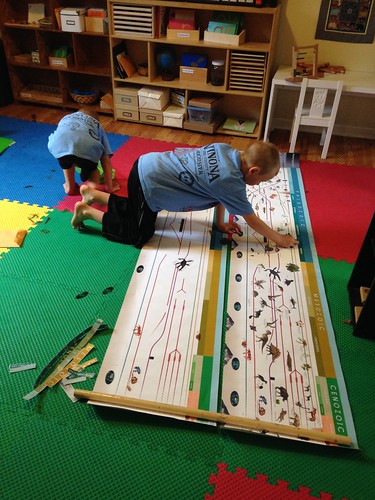
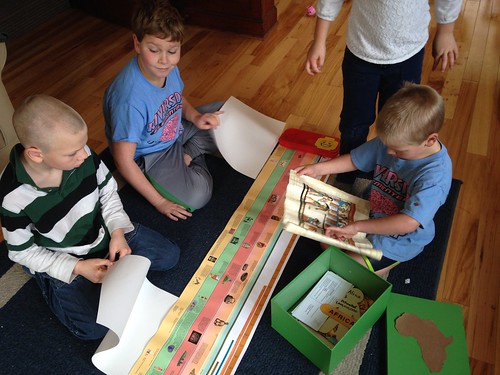
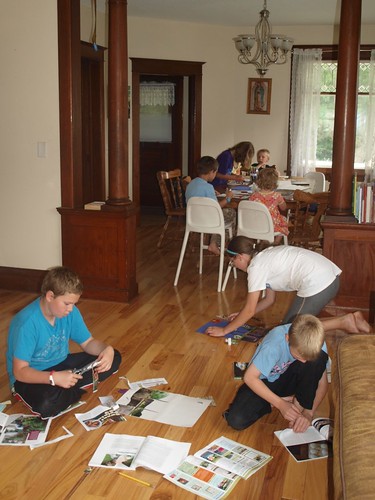
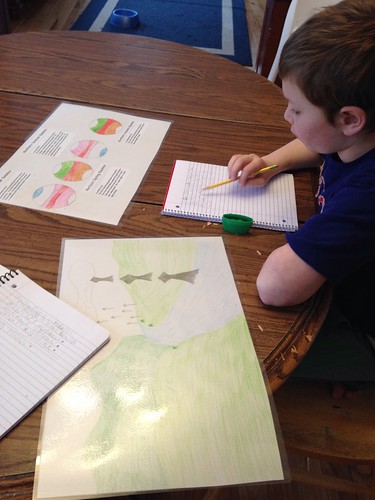
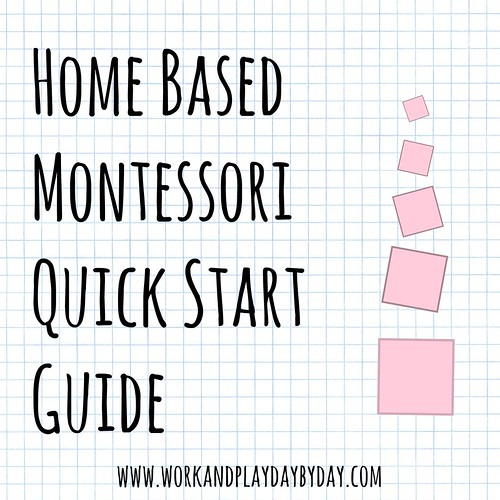
Recent Comments